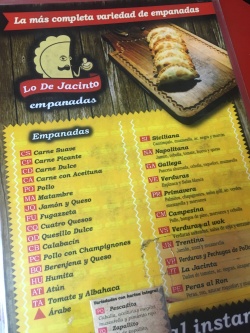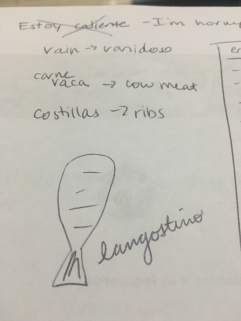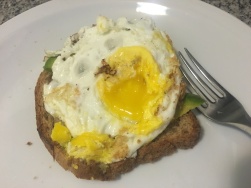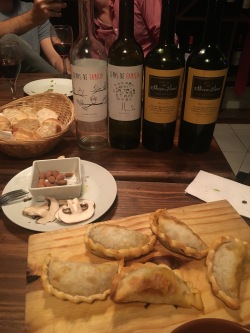Panic. Eyes open wide. Brain frantically sifting through however many vocabulary words in English, then German, then Korean. Uhhh…I don’t even know how to say “I don’t know” in Spanish.

Feeling completely helpless and flustered beyond belief, I stared at the lady behind the empanada counter as if looking at her longer would somehow create a translation like the World Lens app from Google Translate that converts Spanish words on menus to English via your smartphone camera.

Commence charades. Aka point at something on the menu and hope you’re not asking for fried cow testicles, which is actually a delicacy in Cordoba. If you get REALLY desperate, drawing pictures works well too…unless you suck at drawing and your shrimp ends up looking like a carrot.

This was not a singular incident…it actually happened every time I had to interact with a local on my own for the first 3 weeks (thank goodness for people from my group who speak more than I do). I’m usually much more outgoing when it comes to learning languages, but when I have 0 vocabulary, I don’t even know where to begin.
Then, we learned about food in Spanish class! My favorite words so far: huevos [eggs], paltas [avocados], lechuga [lettuce], carne de vaca [meat of cow]. Super comprehensive, I know. Spanish is definitely more difficult to learn than I had anticipated.

For the record, I’ve been taking 4 hours of Spanish – 2 hours every Tuesday and Thursday. First day interactions: Hola, como estas? … bueno … queso … si …
There are a few things that make it confusing for a first-time-Spanish-speaker:
- You don’t always need a subject in the beginning of the sentence.
Ex. “I love chicken” is not “Te amo pollo”…you drop the te and it’s just “amo pollo.” - Speaking of pollo, double ll’s are pronounced as a cross between “sh” and “j” here in Argentina. Think of how you’d pronounce the j in “je mapelle.”
Ex. Typically, you’d pronounce “Pollo” like “Po-yo.” But here, it’s “posho.” - The describing word comes after the noun, not before.
Ex. Chocolate ice cream. Chocolate describes the ice cream. You wouldn’t say ice cream that’s chocolate. But in Spanish, they say “helado de chocolate.”
My respect for people who learn English as a second language has quadrupled!
Week 4 interactions: Buenos Dias Profesora! Que tal? Todo Bien! Como se dice “I love my life?”
After 4 weeks, I’d say that I’ve become quite comfortable hearing the language. It doesn’t sound AS foreign to me anymore. And I can actually order a bottle of wine on my own now. “Para mi, una botella vino por favor.” Bottle because I do not know how to say glass…and who drinks just a glass of wine here anyways? Considering the dining habits (I’ll discuss this in another post to come), a bottle is pretty standard.

3 more months of Español! Hasta luego amigos!

[…] you probably know, based on a previous post, my Spanish is basically limited to foods and maaaybe some basic greetings. So the thought of […]
LikeLike